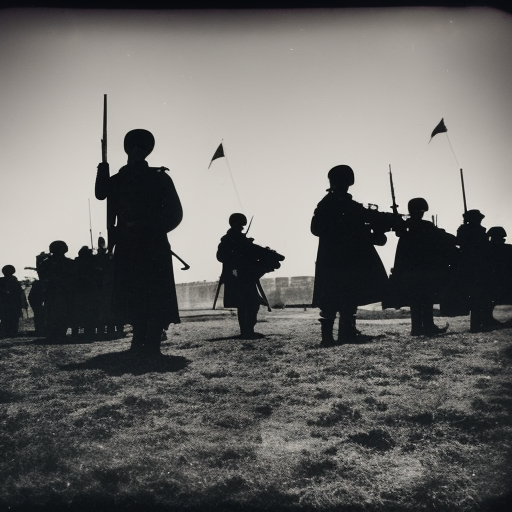Battle of Borgerhout: A Clash of Flemish Cities
The Battle of Borgerhout was a significant conflict that took place on September 14, 1579, during the Eighty Years’ War. It was fought between the Spanish forces loyal to King Philip II and the rebellious Dutch provinces, specifically the city of Antwerp and its allies. The battle marked a crucial moment in the struggle for Dutch independence and had lasting implications for the region.
Background:
By the late 16th century, the Spanish-controlled Netherlands faced growing discontent and resistance from the Dutch provinces. The Protestant Reformation had gained momentum, leading to religious tensions between the Catholic Spanish rulers and the predominantly Protestant Dutch population. The Dutch provinces sought to assert their independence from Spanish rule, leading to a series of uprisings and conflicts.
Antwerp and the Union of Utrecht:
Antwerp, a prosperous and influential city in the Netherlands, played a central role in the rebellion against Spanish rule. It was a major trading hub and a stronghold of Protestantism. In January 1579, several Dutch provinces, including Antwerp, formed the Union of Utrecht, a defensive alliance aimed at resisting Spanish control. The Union sought to secure religious freedom and political autonomy for the Dutch provinces.
The Spanish Siege:
In response to the Union of Utrecht, King Philip II dispatched his trusted general, Alexander Farnese, to suppress the rebellion. Farnese laid siege to Antwerp in 1584, cutting off the city’s access to the sea and surrounding it with fortifications. The Spanish forces aimed to starve the city into submission, as they had successfully done with other rebellious cities in the past.
The Battle:
As the siege dragged on, the Spanish forces faced increasing resistance from the people of Antwerp. In September 1579, a relief force led by Francis Vere, an English military commander, arrived to aid the city. The Dutch rebels and their allies launched a surprise attack on the Spanish camp at Borgerhout, a suburb of Antwerp.
The battle was fierce, with both sides fighting desperately for control. The Spanish forces, though initially caught off guard, managed to regroup and put up a strong defense. The Dutch rebels and their allies, outnumbered and lacking coordination, struggled to break through the Spanish lines. Despite their efforts, the relief force was unable to achieve a decisive victory.
Aftermath:
The Battle of Borgerhout ended inconclusively, with neither side achieving a clear victory. However, the battle had significant consequences for both the Spanish and the Dutch rebels. The Spanish forces, though not defeated, suffered heavy casualties and were unable to break the resistance of Antwerp. The city remained under siege for another year before eventually falling to the Spanish in 1585.
For the Dutch rebels, the Battle of Borgerhout highlighted the challenges they faced in their struggle for independence. It revealed the need for better coordination and military strategy to effectively counter the Spanish forces. The battle also demonstrated the determination of the people of Antwerp to resist Spanish rule, inspiring other Dutch cities to continue the fight for independence.
In the broader context of the Eighty Years’ War, the Battle of Borgerhout marked a turning point. It showed that the Dutch rebels were capable of challenging the might of the Spanish Empire and provided a rallying cry for the Dutch provinces. The conflict would continue for several more decades, ultimately resulting in the recognition of Dutch independence with the Peace of Westphalia in 1648.
In conclusion, the Battle of Borgerhout was a crucial moment in the struggle for Dutch independence. It demonstrated the resilience of the Dutch rebels and the determination of the people of Antwerp to resist Spanish rule. While the battle ended inconclusively, it had lasting implications for the region and inspired further resistance against Spanish control.












